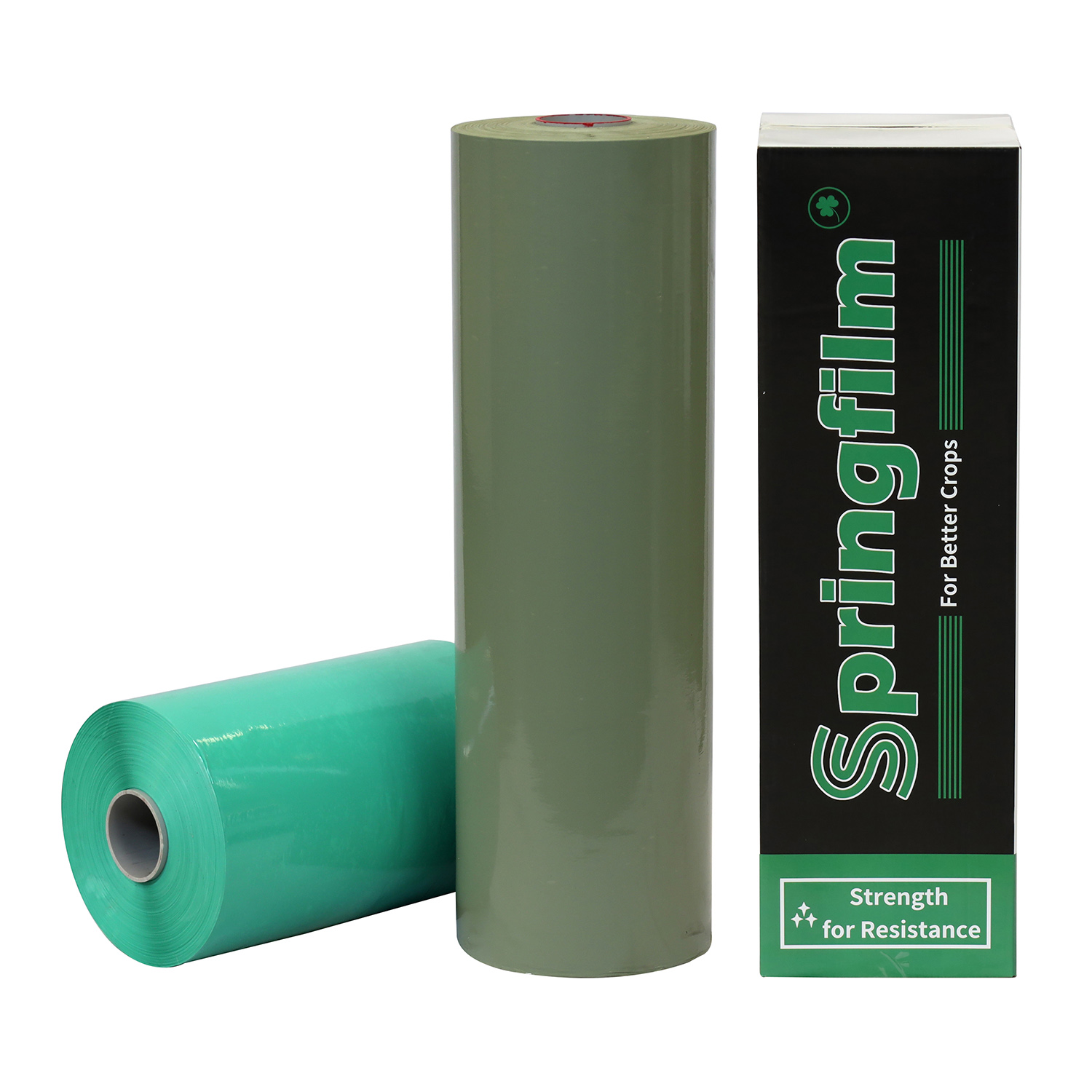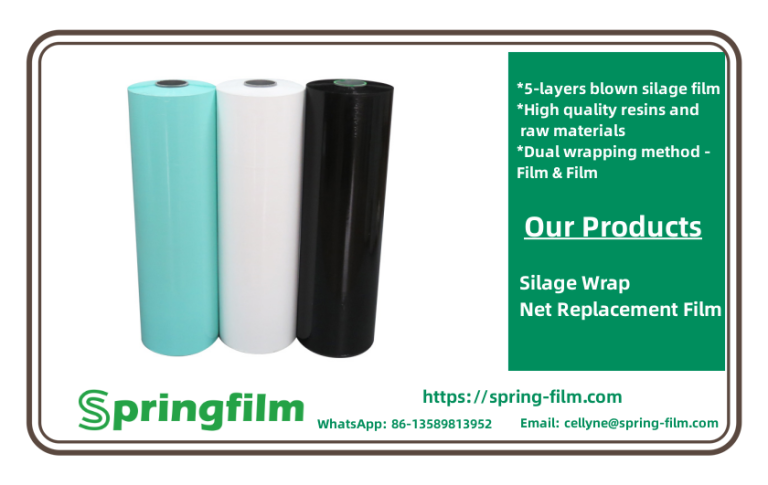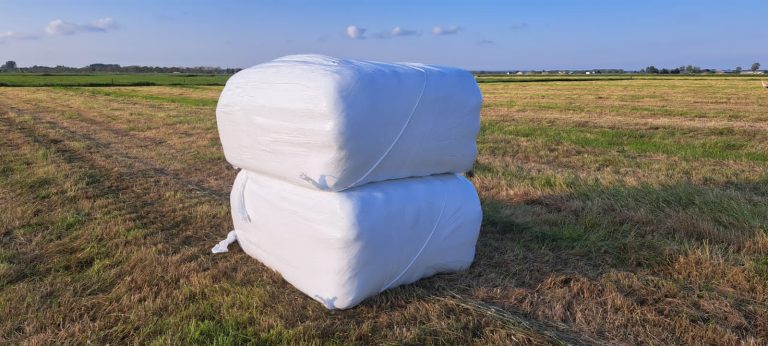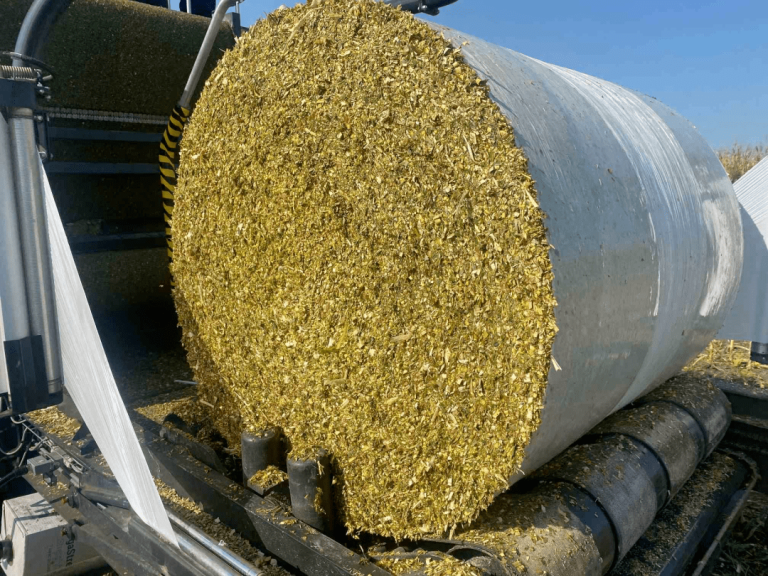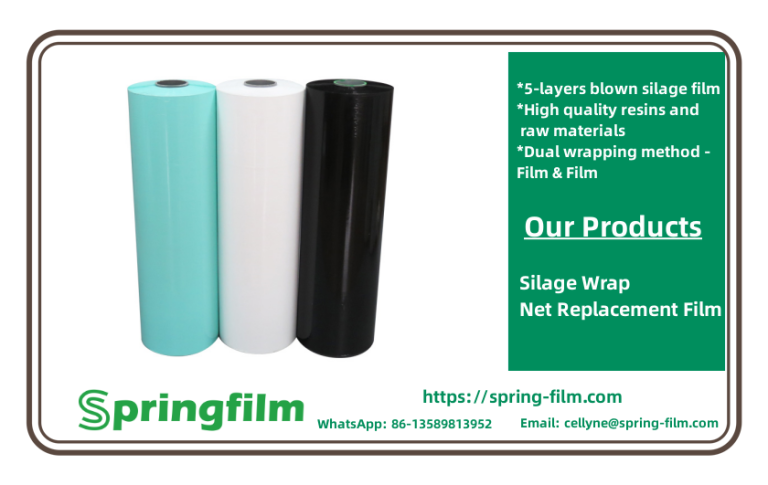Storing unused Silage film company China Hay wrap factory Green silage wrap 750mm properly is essential to maintain its quality and effectiveness. Silage film is commonly used to cover and protect silage piles or bales, preserving the forage for livestock feed. Here are some tips for storing unused silage film:
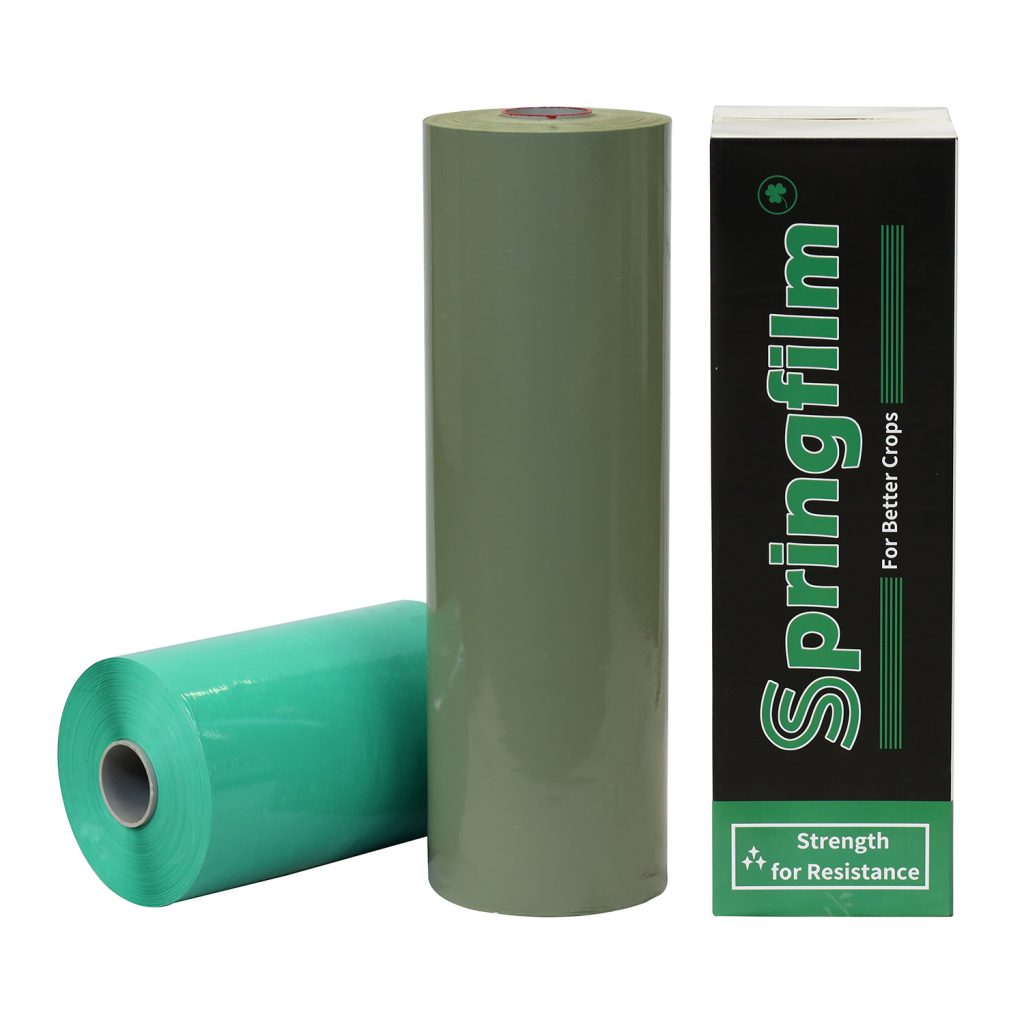
- Keep it in Original Packaging:
- Store the unused silage film in its original packaging. The packaging is designed to protect the film from exposure to sunlight, moisture, and other environmental factors that could degrade its quality.
- Store in a Cool, Dry Place:
- Choose a cool, dry storage area for the silage film. Exposure to heat and humidity can lead to premature degradation of the film. Avoid storing it in direct sunlight, as UV rays can also have a negative impact.
- Avoid Contact with Chemicals:
- Keep the Silage film company China Hay wrap factory Green silage wrap 750mm away from chemicals, solvents, and other substances that could potentially damage or contaminate the material. Chemical exposure can compromise the film’s integrity and affect its performance.
- Protect from Physical Damage:
- Handle the silage film with care to prevent punctures, tears, or other physical damage. Even small damages can compromise the film’s ability to create an effective seal and protect the silage.
- Elevate from the Ground:
- Store the silage film off the ground to prevent contact with moisture. Silage film company China Hay wrap factory Green silage wrap 750mm. Moisture from the ground can lead to mold growth, and it may also affect the film’s tackiness and adhesion.
- Check for Rodents and Pests:
- Regularly inspect the storage area for signs of rodents or pests. Rodents can chew through the silage film, creating holes and compromising its integrity. Use appropriate pest control measures if necessary.
- Rotate Stock:
- If you have multiple rolls of silage film, consider implementing a first-in, first-out (FIFO) system to ensure that older stock is used before newer rolls. This helps prevent the unintentional storage of outdated or compromised film.
- Label and Date:
- Label each roll of silage film with relevant information such as the date of purchase, batch number, or any other details that can help you track its age and quality.
- Regularly Inspect for Damage:
- Periodically inspect stored silage film for any signs of damage, including tears, punctures, or changes in texture. Silage film company China Hay wrap factory Green silage wrap 750mm. If damage is detected, consider replacing the damaged rolls to ensure optimal performance.
- Follow Manufacturer Recommendations:
- Adhere to the manufacturer’s recommendations for storage conditions. Different types of silage films may have specific requirements, and following these guidelines helps maintain the film’s effectiveness.
By following these tips, you can maximize the shelf life and performance of unused silage film, ensuring that it remains effective when needed for preserving silage.

